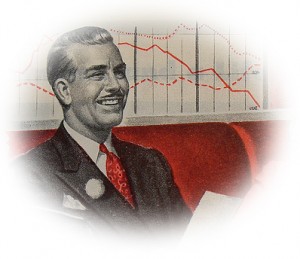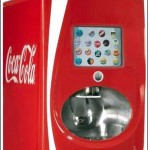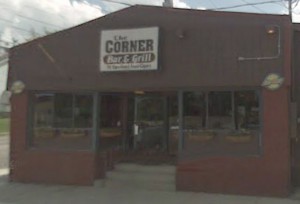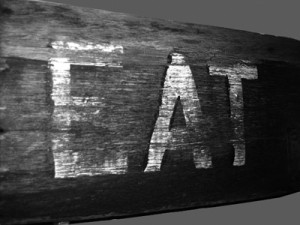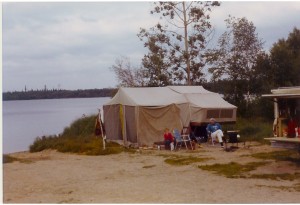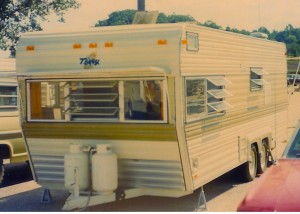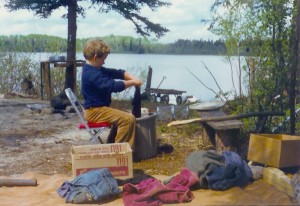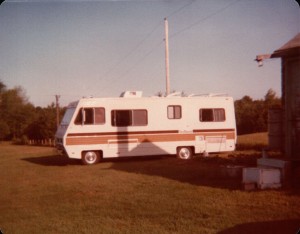
My dad, Leonard Kuehn
“How much money do you make?”
Yes, you read that correctly. How much money do you make? Send me an email with the amount.
You can tell me in terms of hourly, weekly, annually. However you like. Before taxes, if you please.
I suspect that I shall get no emails containing such information. And if on some wild chance that I do, they’ll probably be bogus.
If you asked me to do the same, I’d refuse.
Do you know why you are reluctant to tell people your earnings? I am because of one of the many workplace lessons my dad taught me.
Our attitudes about our earnings are complicated. My wife is a native of Romania and in that country people talk openly about their earnings. So I suspect the way people think about income is not universal.
I think the more one makes, the more reluctant one is to spill the beans. Oddly, the further back in time you reference, the less shy we are about giving up the digits. For example, when I started working at the Kalamazoo Gazette newspaper in Kalamazoo, Michigan, I was hired on for 29.5 hours a week at $3.72 an hour. The federal minimum wage at the time was $3.35, so I was feeling pretty good. I had only worked there for a few months when the newspaper celebrated its 150th anniversary and the publisher passed out raises in recognition of that fact. That put me at $3.90 an hour. I was ready to start shopping for that Mustang GT!
But my current salary? I’d rather not say.
Almost all of my views on compensation, saving and retirement come courtesy of my dad. What he taught me, both emphatically and by simple example, left a deep imprint on me and I think about him and his life almost daily. That’s probably not so unique. We’re all shaped by the people who raised us. But I do believe my perspective comes from a pretty unique place.
In order for you to understand, let me tell you about my dad.
My dad was born to German immigrants in 1907. He attended public school for just a couple of years and since he didn’t speak English, he dropped out. He essentially had no formal education. If you asked him what grade he got to he couldn’t say for sure. His learning came by way of his hands, sweat and street smarts.
He ran away from home when he was 13 years old and rode the rails. He was a hobo. A bum. He went many places on the trains and worked odd jobs in various cities in order to eat.
He eventually arrived in Kalamazoo, Michigan. There he had jobs as an engine tester for Buick, as a laborer in an asbestos plant and finally at a parchment paper-making plant. Over the years he had many jobs with the same company, even as it was bought and sold numerous times.
By the time the Great Depression came around he was a supervisor and during that horrible period, he never lost his job.
My dad was too young to fight in WWI; he was too old for WWII.
He married and had a family: one daughter, two sons. He divorced after over 30 years of marriage.
In 1966 he married a woman 35 years his junior.
She was younger than his own youngest child.
I’ll give you a moment to ponder that.
He was 59, she was 24.
He was older than her parents.
Several months later, his wife pregnant with yours truly, and just shy of his 60th birthday, he was laid off from the paper plant. By that time he was the plant manager at a facility that made plastic drinking cups. They made the kind of cups you often see at a picnic. His world came crashing down around him. He had been earning a very good salary for several years. Now he was newly married, baby on the way, and no job.
He had worked for several decades for the same “family” company. He had known the owners personally. He thought he was a star employee…there never was any hint of anything bad on the horizon. He felt like his generous pension and Social Security benefits would provide an excellent retirement.
Now he, along with many other similarly-aged men, had been cut loose. The company essentially didn’t want to pay full pension benefits to those men. It was a cost-saving measure. Today they might go to court and there are stronger laws to help prevent such actions. In the late 1960s, and being in management and not protected by a union, these men had little to no recourse.
The older I get and the more experiences I have, the more I appreciate the terror that must have gone through my dad’s mind. Fortunately he had a young wife who was just finishing college and starting her career. He had a safety net.
So in 1966 my dad decided to be a house-husband: he would stay home and raise me while my mom went off to work.
I never heard my dad say a bad thing about his former employer. His two sons from his first marriage worked for, and decades later retired from, the same company.
He did talk about his experiences, though. He talked about his “career”, though he never would have called it that. His constant lesson was “Don’t count on the company to take care of you.” But he never said it with malice directed towards the company. At least in my hearing.
Sure, he had been mistreated. But plenty of companies simply went out of business before paying pensions. Or some manager made a mistake and a business went bust. Anything could happen. There had been the Great Depression and while he worked straight through, it had been his job to let men go during that time. He knew bad things happen but he wasn’t the type to blame. Rather he was the type to take inventory and look for the next path.
Decades after the Great Depression he was still bothered by the faces of those he had terminated. If he hadn’t let them go, it would have been his own job lost. But nonetheless, he fully appreciated how fortunate he had been.
One of the great emotional struggles for my dad came in the mid-1970s when the three of us were at the mall. A man and his wife came up to us and it turned out that this guy had worked for my dad during the Great Depression…and my dad had let him go. I don’t remember the man’s face, but I remember his words: “Why did you let me go…I had a family?”
I understood what was going on. Not as much as I now do of course. It sucked the breath out of my dad that day…and for a long time after.
So unlike those I grew up with, I didn’t have a dad who was starting his working life, trying to figure it all out. Instead I grew up with a dad who had sixty years of living under his belt. He knew life before telephones, electricity, automobiles and indoor plumbing were commonplace. He lived to age 87 and never flew in an airplane. I learned from the man that such a life created.
Dad taught me that no matter how good the employer, no matter how excellent the benefits, you’ve got to make your own plan. He wasn’t teaching distrust, rather wariness. He was a big believer in personal responsibility.
In those days there weren’t IRAs or 401(k) savings plans. And stock or mutual fund investing was a deep mystery and not nearly as accessible as today. But he had learned the hard, very hard, way that you can’t trust someone else to take care of you. They may try, they may say they will, they may have good intentions or ill, but you’ve still got to be responsible for yourself.
Even as a young child I worried about making a living. Would I get a job? Would I earn enough to be independent? Would I have a good retirement? I still think about it on a regular basis. No matter how much I save, will it be “ready” when I am? Will I outlive it?
My dad also prepared me to do what the boss told me to do. I’m not saying I’m a perfect employee. Not even close! But my goal is to do what my manager wants me to do. Even if I don’t agree with nor like what I’m asked to do, I try my best to do it.
I think my dad’s belief was that if you are a good employee, are agreeable, have a good attitude about work and foster a partnership with the boss, when it comes time to either let people go or move people up, you’ll be in a better position. I spent a few years as a department supervisor and while I learned that I am not cut out to manage people, I also saw the wisdom of my dad’s example.
If you’re the type to complain or resist or challenge all the time, without really good reason, it’s just instinct for the boss to not have the best plan for you. If workplace changes send you on the offensive, how do you think your manager is going to view you?
I’ve had some pretty good managers. I’ve highly respected the managers who could do my job. If I dropped dead on Monday, those bosses who could simply do my work earned my respect. They knew what was involved so they appreciated what I did and understood the effort involved. And they could also look at my work and fairly and completely evaluate it.
I also had some managers who had no clue what I did but admitted that fact. They knew they needed done the work that I was doing but also knew they didn’t know how to do it. I respected them for knowing what was important and trusting me to do it. It was also important that they evaluated me based upon my level of success and the reports they received from my “customers.”
Managers that have not garnered my respect are those who believe that by simple fact of their position they are imparted with knowledge and experience related to my work. Those who fake or pretend get a suspicious eye from me, not respect. In my opinion no one person knows everything about anything. And some who end up in management positions think the position imparts special powers or knowledge. It does not.
However that may be, I always tried to do right by the manager I had at the time.
My dad often would tell me that even a bad situation doesn’t last forever. The bad manager will move on. You will move on. The situation will change. He would have appreciated the more modern motivational phrase “Nothing too good or too bad lasts for too long.”
So I always try to be a good worker. I want my boss to like me, say good things about me and not be the one he or she complains about around their dinner table. I’m certain I’ve been that topic of consternation from time to time, but I strive to not be.
My dad also stressed that you shouldn’t tell others how much you earn. Because my dad was a supervisor he hired and fired. He had union and non-union employees. He had hourly and salaried workers. I benefited from his decades of experience. His advice to me was to think only of myself. If I was considering a job, consider the work and the pay being offered. If it was a fair deal in my mind, I should go for it. If not, walk away. Similarly, after having the job, if the level of work or effort was not worth the pay, it was up to me to justify and ask for an increase. But if I didn’t get it there was no purpose in being mad, cutting back on my effort or becoming that “bad” worker. The mantra of personal responsibility said I should simply look for something else instead. While on the clock, do your best, that’s what he would say. If the pay doesn’t measure up to the requirement, the boss or company isn’t at fault. They’re making a valuation decision for themselves. It’s my job to put a value on my skills and work. If the requirements don’t match the pay, the employer isn’t the bad guy, I simply need to accept it or make a change.
My dad would tell me stories about workers who did the same job under him, but got paid differently. As a little kid those stories were rather abstract. It just seemed normal to me. It wasn’t until I had been working for a while that I understood the import.
Dad would tell me about one person who made more because he was always on time or early, always took on the additional request without moaning or complaining. That person was one of the “go-to” fellas dad could trust and rely on.
The employee making less did just what was required, nothing more.
To this day I hear co-workers complain about differences in pay. The amount we’re paid for our labor is not always fair to be sure! Sometimes it’s the result of who negotiated the best. Sometimes the differences are a true mystery. But I learned, at least from my dad’s experience, that there was a reason. On the outside, and from those on the plant floor, it may have seemed arbitrary and unfair. But since he had to justify what he paid people to those in the accounting office, he had reasons.
I’ve tried to take that lesson to heart. Again, I try to be agreeable and work with people rather than against. I try to keep my complaints and gripes away from the boss unless there’s something constructive we can do to address them.
My dad also made me think about how people feel when they learn about other’s pay. As my dad would tell me, if you share with others what you’re making, there’s almost nothing good to come from it. If you’re making more than the other person, they resent you. And they may complain to the boss that they want to make as much as you do. You have their resentment as well as the angst of the boss who now has yet another personnel headache to deal with.
And if you are the one making less you are likely the one who will complain to the boss. You’ll feel undervalued whereas just before hearing of your co-worker’s pay, you were happy to show up and do the work for your pay. Now everything is called into doubt.
Of course it’s useful to know what the pay is for similar jobs. This is particularly true if you’re actively trying to secure a new position. Sharing numbers with co-workers, especially out of idle curiosity and nosiness, seems like a dose of poison to me.
I recall at one job we had two women with the same first name working in the department. Each woman had a different job description. Our pay checks were often stacked on the boss’ desk and we’d just grab our own each payday.
One day one of the women accidentally grabbed the pay envelope for the other person with the same first name. To this day I believe it was an honest mistake. But she was totally blown away by how the amount of the other woman’s check. Granted, the job descriptions were miles apart, and I don’t think anyone thought the higher-paid woman was being over-paid, but it brought to light the size of the pay gap between the jobs.
Oh the problems that discovery created! Talk spread of how much one made over the other. Any time the higher-paid woman made a mistake the pay difference would come up. For months and months it was a divisive force in the department. It was not good. The discovery was an accident and neither woman had done anything wrong, nor had the company, in my opinion. But the knowledge created a rift that lasted for a long time.
I think we often believe that those doing the same job should be paid an identical amount. If there are five shipping and receiving clerks, they should all make the same money. They’re doing the same job: they we should earn the same money. That’s the belief.
When we’re talking about race or gender in the workplace I’m totally on board — those should not be factors in determining pay. Nor should family size (I actually had a manager tell me once that I wasn’t getting a raise because a colleague needed it more because they had a “family”).
But I’m not completely sure pay should be identical. Nor do I think one should make more simply because of seniority. Nor should someone automatically earn more based upon their level of education.
You could have two people come into a job, one with 10 years of experience and a Master’s degree, and the other with no degree and no experience. On the surface it might seem proper to pay the first person more. But what if that first person just doesn’t “get it”, is slow to learn and pick up on the details of the job, or comes in late, takes long lunches, leaves early, does the bare minimum and is rude to customers? Should we take that into account? What if the person without a degree nor experience hits the door running each morning, customers love her and she picks up each new task instantly? Which person is more valuable to the company? Which is better at the job? Which deserves more? Which one do you want to keep?
Pay can also get out of whack due to the company’s desire to be fair. I once lead a team of people and inherited an employee from another department that was being restructured. The employee that joined my team had done nothing wrong, but their job was no longer required. The company tried to do the right and fair thing: they transferred this person to my team. But the sticky point? The prior job paid more. Paid more in fact than I was making.
That’s when I learned that the supervisor doesn’t always make more than the supervised. Over the years I’ve learned in many ways that this is not unusual. Good companies don’t want to penalize people for changes in priorities, so they keep someone at their former rate of pay.
Of course as the supervisor that bothered me. Over time members of the team realized this person was making more than they were (considerably more). It was a constant source of stress.
But that’s not all. This transferred employee was used to somewhat regular pay adjustments due to good performance. On my team the pay was never adjusted because it was already so far above the top pay for the current job description. So over the years this transferred employee began to forget how the company had tried to look out for them and began to feel like a victim.
People who know me well know that I have very fond feelings about my years at the Kalamazoo Gazette newspaper. It was certainly not always roses and ice cream, but the Gazette was a good place to work. I had a couple of managers whom I did not like but I had more managers who were good and good to me. I’ve been away from the Gazette for about 13 years as of this writing and am still in weekly contact with one of my former supervisors. Yet another, who unfortunately passed away shortly after his retirement, was like a second father to me…he was a real mentor to me personally and professionally.
The Gazette paid for 100% of my college degree. About the only thing I had to pay for was parking! They provided a flexible work schedule that allowed me to get my education (albeit it took me eight years to get a four-year degree).
The Gazette is owned by the Newhouse family and, at least historically, they had benefits that were enviable. I had a pension plan and a 401(k) plan. I had totally free health insurance that was excellent. I had life insurance. I had unlimited sick time (the rule was “take what you need when you need it – we trust you.”) Paid vacation time was also generous in the extreme.
The Gazette invested in me in numerous ways. I got training in Novell NetWare, Solaris, Atex, Camex, laser imaging technology…the list is long! That type of training was and is very expensive. I got to travel on the company dime.
I knew I was being treated very well, and my dad was proud that I had a job with such a good company. It was a job, with its good and bad, but I was happy.
But then one day I was contacted about a job at another newspaper. It was a much larger operation and they were looking for someone with my skills. They contacted me through a colleague of mine.
I wasn’t looking for another job. I perhaps was a little bored at the Gazette and would have been interested in going to corporate or to one of the larger newspapers in the chain, but I was more or less happy where I was. And the city where this other job was located was not appealing…not even a little bit. But they wanted me to come out to interview and look around right away.
So I decided nothing could be harmed by going and checking it out. I was surprised by how much I liked the place and the people and the philosophy behind how the job would be structured. Oh, there was a lot to like about the job they were offering. I found myself being very interested in making the move. They had me on-site for a couple of days so I could spend time learning about the area and seeing the operation in full swing. By the end of the first day I was thinking I might like this job.
Before my visit was over they were offering me the job. And the salary offered was a lot more than I was making in Kalamazoo. $20,000 more per year. That’s a lot of money in my book. This new place didn’t have a pension, but many of the other benefits were the same. Plus the working conditions and hours and on-call responsibilities were much, much more favorable. And instead of being on a team of five people, I’d be on a team of 30+ people. In short, they were offering a huge raise for me to do a fraction of the work I was responsible for in Kalamazoo.
I thought long and hard before accepting that job. I think I took a month before giving them a positive answer. And it wasn’t about that $20,000 increase in salary. It was the complete package. It was a good move for me. These many years later I still am glad I made the decision. I learned a lot more at the larger company, my responsibilities increased, I got even more training, my quality of life improved more than I can say and over time my salary was improved even more.
It was a good thing. But it made personal many of the lessons my dad had taught me. At the time I was in an odd situation in terms of managers at the Gazette. I had essentially two managers. My time was being split between two departments and two projects. When I went into one of my boss’ office to give my notice I was asked how much the new job was going to pay me.
I hesitated. My decision was firm – I was leaving. And because I had learned how much value another company put on my skills, and because I’d be leaving behind some really fantastic colleagues who deserved more, I decided to be totally honest. So I gave the amount of my new salary.
Without missing a beat my manager said “I can bump your pay $10,000 right now, today…if you want to stay.”
What?
I was worth $10,000 more than I was already making? I wonder how much my co-workers were making? Was I the stupid fool who was working for peanuts while everyone else was getting paid more? I don’t know…I’ve never learned how much my colleagues were making. But I was sick to my stomach that all I had needed do was threaten to leave and I could have gotten a substantial salary increase.
I was already on my way – for a lot of reasons, so the $10,000 “offer” didn’t sway me. But it was an important, and painful, lesson. A lesson I had learned from my dad, but it became personal. And painful.
Dad’s been gone for a long time now. But his experiences and lessons continue to be valid and I rely on them every day.
I feel bad that he spent a lifetime working so hard only to be cast aside at the end. Until I get put in that little box in the ground, I won’t know how my story ends. Will I fare any better? Will I fare worse? I just don’t know. But I do my best to be a good worker and to take responsibility for my own path. That’s what dad would have suggested and I think he was right.
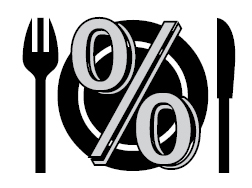 I recently gave serious consideration over how much to tip our waitress at one of our favorite sushi joints.
I recently gave serious consideration over how much to tip our waitress at one of our favorite sushi joints.
